
npj 2D Materials and Applications
Scope & Guideline
Advancing Innovations in Two-Dimensional Applications
Introduction
Aims and Scopes
- Synthesis and Fabrication Techniques:
The journal emphasizes advancements in synthesis methods for 2D materials, including chemical vapor deposition (CVD), exfoliation techniques, and novel fabrication processes that enable the production of high-quality 2D materials. - Characterization Methods:
Research articles frequently discuss innovative characterization techniques such as spectroscopy, microscopy, and electronic transport measurements, aimed at understanding the properties and behaviors of 2D materials. - Electronic and Optoelectronic Applications:
A significant focus is on the application of 2D materials in electronic and optoelectronic devices, including field-effect transistors, photodetectors, and neuromorphic computing systems. - Magnetism and Spintronics:
The journal covers studies related to magnetic properties of 2D materials and their applications in spintronics, exploring phenomena such as valley polarization and spin filtering. - Energy Storage and Conversion:
Research on energy-related applications, including batteries, supercapacitors, and catalysts, is a critical area of focus, highlighting the potential of 2D materials in sustainable energy solutions. - Theoretical and Computational Studies:
Theoretical analyses and computational modeling of 2D materials are also featured, providing insights into material properties and guiding experimental research.
Trending and Emerging
- Heterostructures and Interfaces:
Research on van der Waals heterostructures has surged, showcasing the importance of layer stacking and interface engineering to create novel electronic and optoelectronic devices with enhanced properties. - Neuromorphic Computing and Artificial Intelligence:
There is a growing interest in utilizing 2D materials for neuromorphic computing applications, reflecting a trend towards integrating AI capabilities into electronic devices, leveraging the unique properties of 2D materials. - Sustainable and Green Technologies:
The journal increasingly features studies on the use of 2D materials in sustainable technologies, such as water purification, energy storage, and catalysis, aligning with global trends towards eco-friendly materials and processes. - Quantum and Topological Materials:
Emerging research on quantum materials and topological phases in 2D systems is gaining momentum, highlighting the potential for groundbreaking applications in quantum computing and advanced electronic devices. - Flexible and Wearable Technologies:
The development of flexible and wearable devices using 2D materials is trending, driven by the demand for lightweight, portable, and high-performance electronics in everyday applications.
Declining or Waning
- Bulk Properties of 2D Materials:
Research on bulk properties and behaviors of 2D materials has decreased as the field increasingly concentrates on nanoscale effects, interfaces, and heterostructures that exhibit novel phenomena not seen in bulk materials. - Traditional Semiconductor Applications:
There is a noticeable waning interest in conventional semiconductor applications of 2D materials, as research shifts towards more innovative uses such as neuromorphic computing, flexible electronics, and energy harvesting. - Homogeneous Material Systems:
The exploration of homogeneous 2D materials is declining in favor of studies on heterostructures and composites, which can harness the synergistic effects of multiple materials to achieve superior functionalities.
Similar Journals
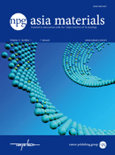
NPG Asia Materials
Connecting Academia and Industry through Cutting-edge ResearchNPG Asia Materials, a premier journal published by NATURE PORTFOLIO, stands at the forefront of research in the fields of condensed matter physics, materials science, and modeling and simulation. With an impressive Impact Factor gracing its Q1 rankings in 2023, this open-access journal, established in 2012, offers a vital platform for disseminating high-quality research articles, reviews, and perspectives that advance the understanding of material properties and innovative applications. Based in the United States and catering to a global audience, NPG Asia Materials features cutting-edge contributions that not only enhance academic scholarship but also provoke discussions relevant to both industry and academia. Researchers, professionals, and students are invited to explore its extensive archive of work, covering insights from 2009 to 2024, in a bid to stay abreast of the latest developments in these rapidly evolving scientific domains.

Nanomaterials
Pioneering Research in Nanostructured SolutionsNanomaterials, published by MDPI in Switzerland, stands as a leading platform in the realm of materials science and chemical engineering. Since its inception in 2011, this Open Access journal has garnered significant attention, reflected in its impressive rankings—placing in the Q1 category for Chemical Engineering and Q2 for Materials Science as per the 2023 quartiles. The journal consistently fosters innovation and interdisciplinary research through its rigorous peer-reviewed articles, inviting submissions that span a wide range of topics from nanostructured materials to advanced engineering techniques. With a commendable Scopus rank—#44 in Chemical Engineering and #93 in Materials Science, both within the top percentiles—Nanomaterials serves as an essential resource for researchers, professionals, and students eager to stay abreast of developments in this rapidly evolving field. Since its establishment, it has distinctively contributed to the academic community by facilitating insightful knowledge exchange and promoting high-quality research around nanoscale materials.

ACS Applied Electronic Materials
Innovating Technologies Through Cutting-edge ResearchACS Applied Electronic Materials, published by the American Chemical Society, is a prominent journal in the field of applied materials science, with a particular focus on electronic, optical, and magnetic materials. Established in 2019, this journal has quickly risen to prominence, achieving a 2023 ranking of Q1 in both Electronic, Optical and Magnetic Materials and Materials Chemistry, as well as Q2 in Electrochemistry, reflective of its high-quality contributions and significant impact within the scholarly community. With an impressive Scopus rank of #22 in Electrochemistry, #59 in Electronic, Optical and Magnetic Materials, and #75 in Materials Chemistry, ACS Applied Electronic Materials serves as an essential resource for researchers, professionals, and students seeking to explore innovative advancements in the field. While the journal is not open access, it offers robust subscription options and aims to foster the dissemination of cutting-edge research articles, reviews, and technical notes that contribute to the understanding and application of electronic materials in various technological contexts. As a platform for pioneering research and cross-disciplinary dialogue, this journal is indispensable for anyone invested in the future of materials science.

Nano Express
Fostering breakthroughs in biomaterials and beyond.Nano Express is an esteemed open-access journal published by IOP Publishing Ltd, dedicated to advancing research in the fields of nanotechnology and materials science. Since its launch in 2020, the journal has swiftly established itself as a vital resource for researchers and professionals, garnering significant recognition in various domains, including biomaterials, electronic, optical and magnetic materials, and polymers and plastics. With a commendable categorization in Scopus quartiles, it ranks in Q2 for Electronic, Optical and Magnetic Materials, and maintains a top percentile in several others, exemplifying its commitment to high-quality research dissemination. Located in the United Kingdom, this journal fosters a global dialogue among experts and newcomers alike, facilitating open access to innovative research that drives the future of nanotechnology. By offering a platform for groundbreaking studies and reviews, Nano Express aims to bridge the gap between theoretical understanding and practical application, championing the development of next-generation materials that have the potential to transform various industries.
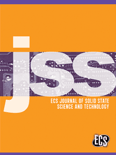
ECS Journal of Solid State Science and Technology
Unlocking the Potential of Solid State InnovationsECS Journal of Solid State Science and Technology, published by the Electrochemical Society, is a prominent journal dedicated to the advancement of research in the field of electronic, optical, and magnetic materials. With an ISSN of 2162-8769 and an E-ISSN of 2162-8777, this journal has established a significant presence since its inception in 2012, spanning critical developments in solid-state science that are essential for innovative technologies. Operating within the United States and recognized for its global outreach, it holds a respectable Q3 category ranking in the materials science category as of 2023, reflecting its commitment to high-quality research and its role in bridging theoretical and applied aspects of materials science. Researchers, professionals, and students alike will find vital information and cutting-edge studies that further the understanding and applications of solid-state technologies. The journal is accessible to an extensive audience, making it an invaluable resource for those engaged in the ever-evolving landscape of materials science.
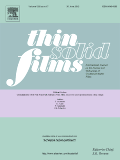
Thin Solid Films
Charting New Territories in Materials ResearchThin Solid Films, published by ELSEVIER SCIENCE SA, is a highly regarded journal in the fields of materials science and physics, specifically focused on the properties and applications of thin films. Established in 1967, this journal has been a leading platform for disseminating research on surfaces, coatings, and advanced materials. With its consistent publication through the notable HIndex of scholarly impact, this journal showcases a diverse range of studies ranging from electronic, optical, and magnetic materials to novel surface and interface engineering. In recent evaluations, Thin Solid Films has achieved significant rankings, including a Q2 position in Materials Chemistry and Metals and Alloys, reflecting its relevance and importance in ongoing scientific discourse. Although it does not offer open access, it provides a vital resource for researchers, professionals, and students seeking to advance their knowledge and expertise in thin film technology. The journal's commitment to quality and innovation makes it an essential publication for anyone engaged in the field.
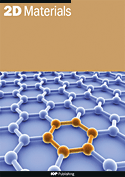
2D Materials
Advancing Innovation in Two-Dimensional Science2D Materials is a leading peer-reviewed academic journal published by IOP Publishing Ltd, dedicated to advancing the field of two-dimensional (2D) materials research. Since its inception in 2014, the journal has rapidly become a primary platform for disseminating cutting-edge findings across a broad spectrum of disciplines, including Chemistry, Condensed Matter Physics, Materials Science, and Mechanical Engineering, successfully securing a top-tier quartile ranking (Q1) in these fields as of 2023. With an impressive Scopus ranking—placing it in the top 7% in Mechanical Engineering and top 8% in Condensed Matter Physics—this journal exemplifies excellence in scholarly communication. The journal offers diverse access options to cater to a global audience, underscoring its commitment to fostering collaboration and innovation within the scientific community. As researchers, professionals, and students continue to explore the vast potential of 2D materials, 2D Materials remains at the forefront, shaping the future of material science with impactful research and comprehensive reviews.
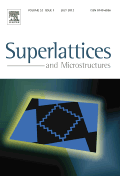
SUPERLATTICES AND MICROSTRUCTURES
Innovating through cutting-edge research in condensed matter physics.SUPERLATTICES AND MICROSTRUCTURES is a premier journal dedicated to the exploration and dissemination of cutting-edge research in the fields of Condensed Matter Physics, Electrical and Electronic Engineering, and Materials Science. Published by Academic Press Ltd - Elsevier Science Ltd, this journal has established itself as an important platform for scholars and industry professionals to share their findings related to the design, fabrication, and application of superlattices and microstructured materials. With a commendable impact factor reflected in its rankings—positioned within the top quartile in Physics and Astronomy as well as Electrical and Electronic Engineering—it offers high visibility and influence in the academic community. The journal has covered significant contributions from 1985 to 2022, although access options have transitioned, making staying current essential for researchers and practitioners alike. This journal not only serves as a repository of knowledge but also fosters collaboration and innovation in materials science and related disciplines.
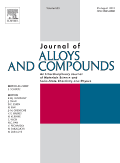
Journal of Alloys and Compounds
Transforming Knowledge into Material SolutionsJournal of Alloys and Compounds, published by Elsevier Science SA, stands at the forefront of materials research, focusing on the properties, applications, and innovations within alloys and compounds. With an impressive impact factor and prestigious rankings placing it in the Q1 quartile across multiple related categories—including Materials Chemistry, Mechanical Engineering, and Mechanics of Materials—this journal is recognized for its significant contributions to the field. Researchers and professionals engaged in metallurgy, materials science, and engineering will find it a critical resource that encompasses groundbreaking studies, insightful reviews, and essential findings. The journal has a strong influence, as evidenced by its Scopus rankings—ranking 14th in Metals and Alloys and 28th in Mechanics of Materials, indicating a robust global impact. As it continues to publish cutting-edge research from 1991 to 2024, the Journal of Alloys and Compounds serves as a vital platform for the exchange of knowledge, thereby advancing our understanding of complex materials and fostering innovation in diverse applications.

APPLIED PHYSICS A-MATERIALS SCIENCE & PROCESSING
Transforming Ideas into Materials BreakthroughsApplied Physics A: Materials Science & Processing, published by Springer Heidelberg, is an esteemed academic journal that has been at the forefront of innovative research since its establishment in 1995. With a strong focus on the intersection of physics, materials science, and engineering, this journal explores cutting-edge developments and applications that influence contemporary materials research. Categorized in the Q2 quartile across both Chemistry and Materials Science, it boasts respectable rankings in Scopus, affirming its influence and reach within the academic community. Although primarily a subscription-based journal, it is dedicated to disseminating high-quality research findings that advance our understanding in these fields. Researchers, professionals, and students alike can benefit from the journal's commitment to publishing comprehensive studies, methodological advancements, and insightful reviews that push the boundaries of knowledge in materials science.